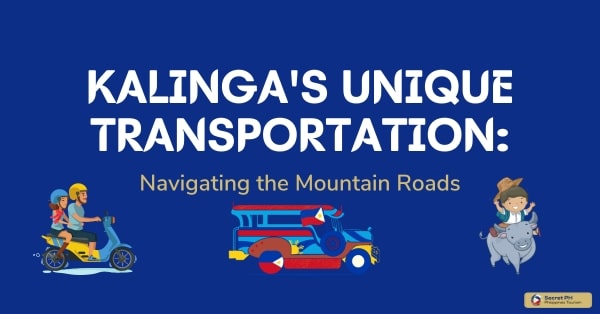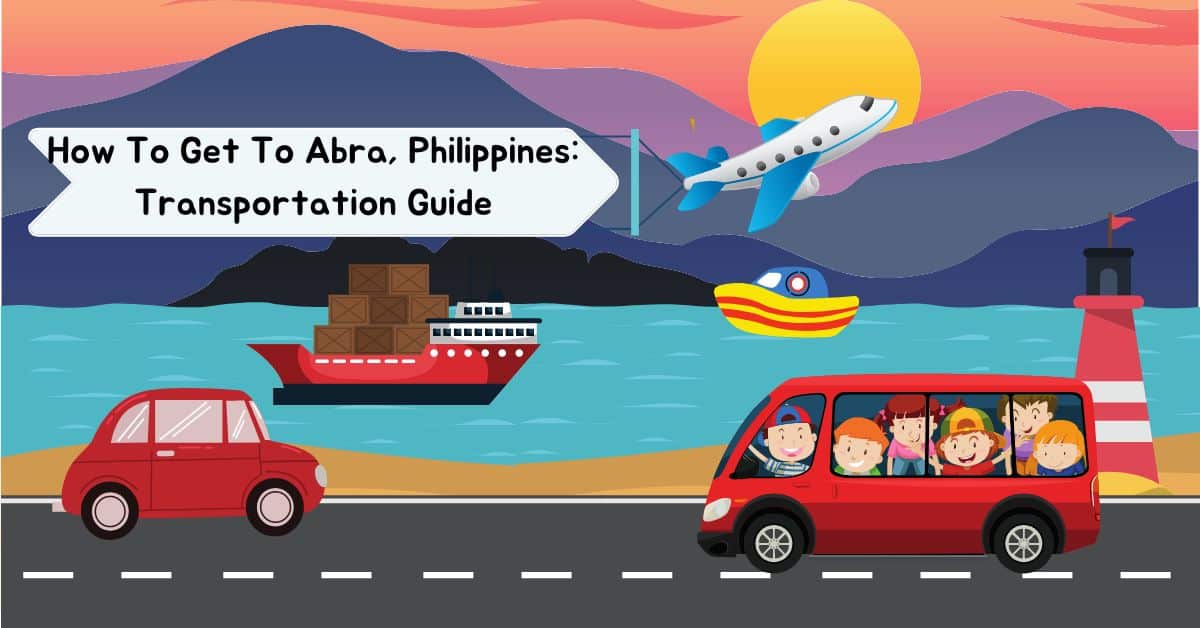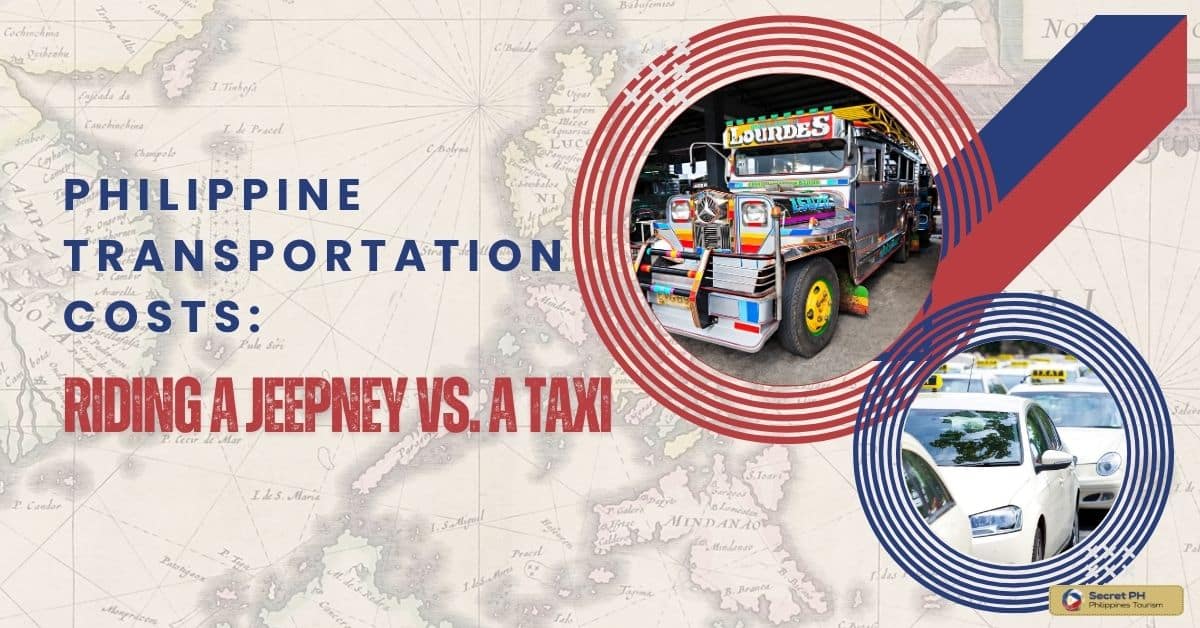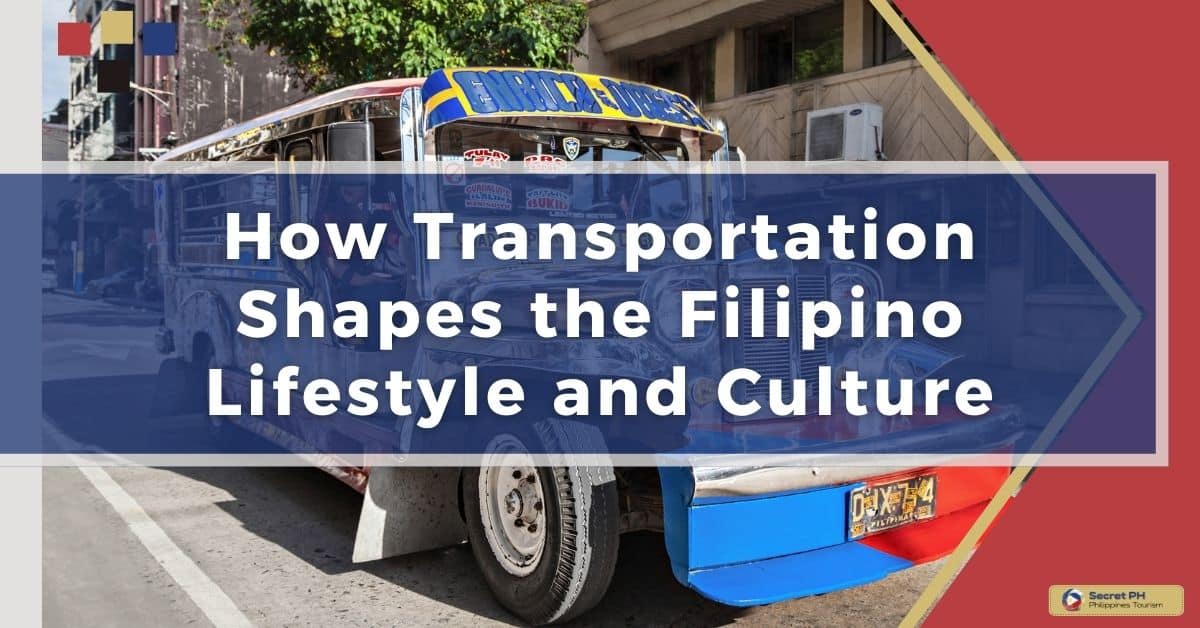Pedicabs are a popular mode of transportation in the Philippines. They offer passengers an economical, convenient, and accessible way to get around major cities and rural areas alike. While pedicabs can provide important benefits to the Philippine economy and environment, some drawbacks need consideration when it comes to their use.
In this article, we will explore the pros and cons of pedicab use in the Philippines, as well as look at the economic and environmental impact it has on the country. We will also discuss government regulations and policies regarding their usage. Finally, we will consider what measures need to be taken to ensure a safe and sustainable future for pedicab use in the Philippines.
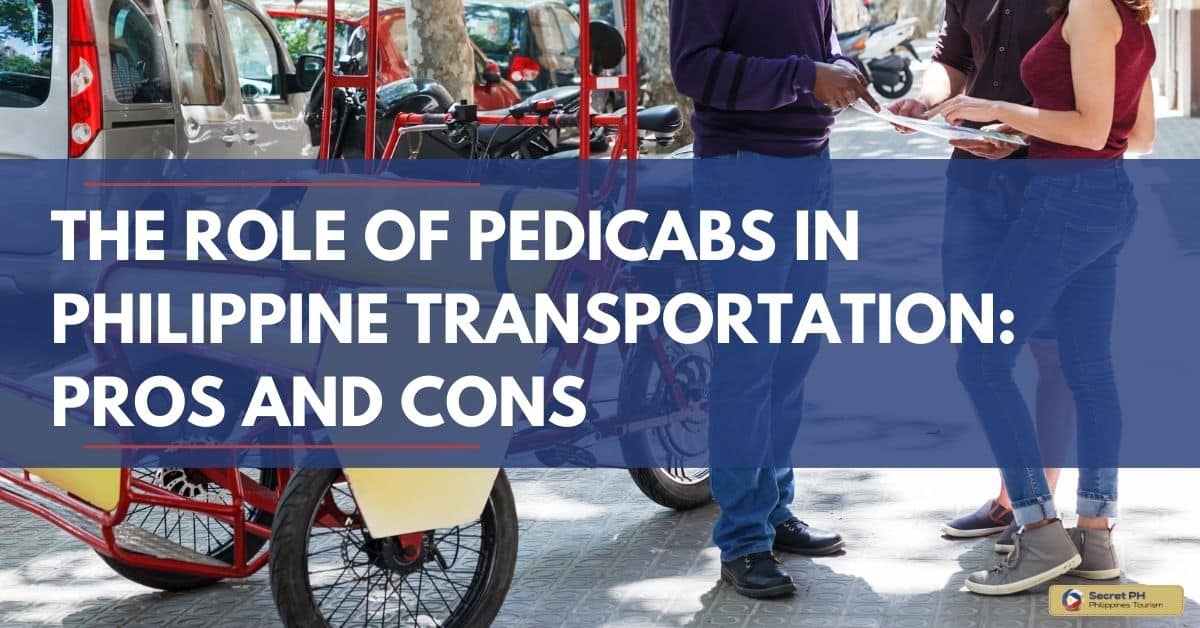
What are Pedicabs?
Pedicabs are small, three-wheeled vehicles powered by a bicycle. They usually consist of an enclosed cab with two or four seats and are used to transport passengers around cities. Pedicabs are a popular form of urban transportation in the Philippines, where they have been used since the early 20th century.
Pedicabs are available in both motorized and non-motorized models, with the latter being more common in rural areas. The cost of a pedicab is typically very affordable, making them ideal for those who cannot afford to own a car or use public transportation.
Additionally, pedicabs can navigate through narrow alleys and roads that are not accessible by larger vehicles. This makes them a convenient way to get around cities quickly, as well as a great option for those who prefer to avoid traffic and parking issues.
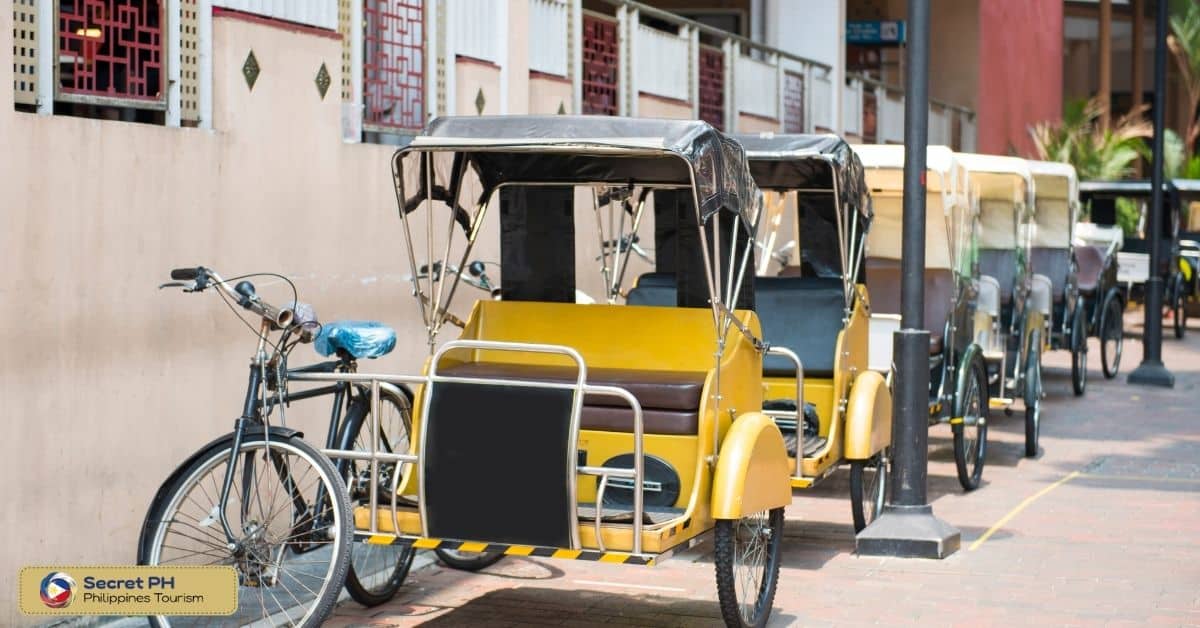
Pros of Using Pedicabs
Pedicabs offer numerous benefits to both passengers and the wider Philippine economy. Here, we will explore some of the major advantages of using pedicabs in the Philippines.
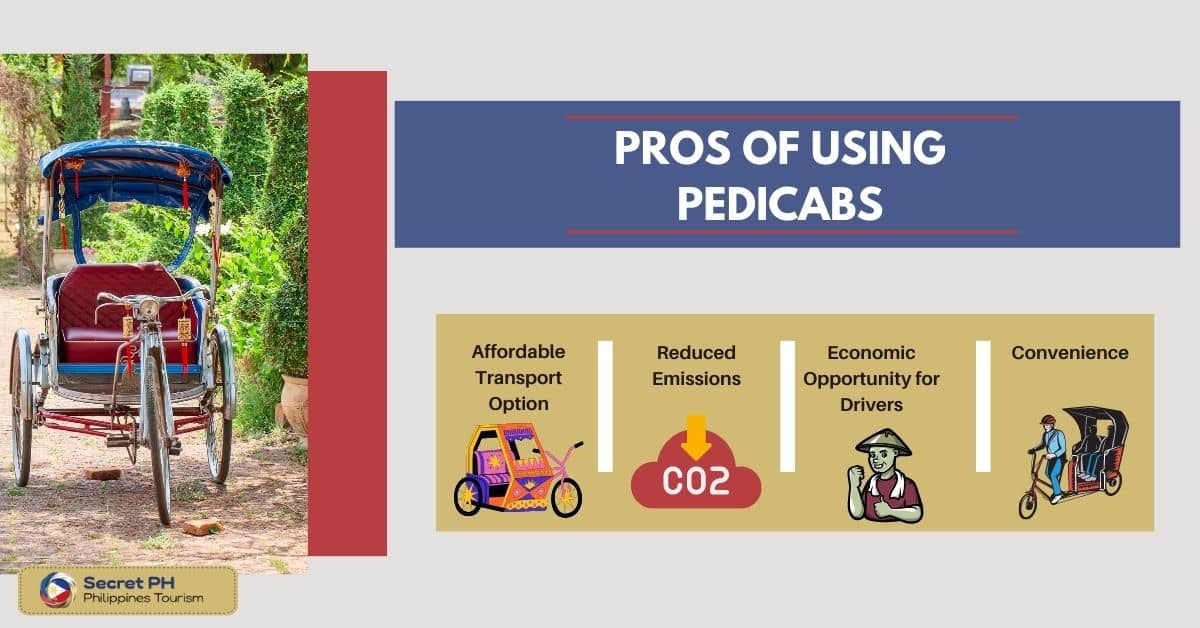
Affordable Transport Option
The most obvious pro to using pedicabs is the affordability they provide. Pedicab fares are usually much lower than the cost of taking a bus or taxi, making them an ideal option for those with a tight budget. Additionally, pedicabs are often much faster than other vehicles due to their ability to navigate through narrow roads and alleys.
Reduced Emissions
Pedicabs produce fewer emissions than motorized vehicles, which benefits both the environment and air quality. The lower emissions also reduce the amount of smog created by vehicles, improving visibility on roads and in cities
.
Economic Opportunity for Drivers
Pedicabs provide a source of employment for many people in the Philippines. Drivers can make a decent income by offering pedicab services to passengers, which helps them support their families and adds to the local economy.
Convenience
Pedicabs are convenient for passengers, especially those who have difficulty walking or traveling by public transport. Pedicab drivers can pick up passengers from any location and drop them off at their destination quickly. This is especially beneficial for elderly people, pregnant women, and those with disabilities who may have difficulty walking.

Cons of Using Pedicabs
While pedicabs offer numerous benefits to passengers and the Philippine economy, some drawbacks need to be taken into consideration. These include safety concerns, a lack of regulation, and environmental issues.
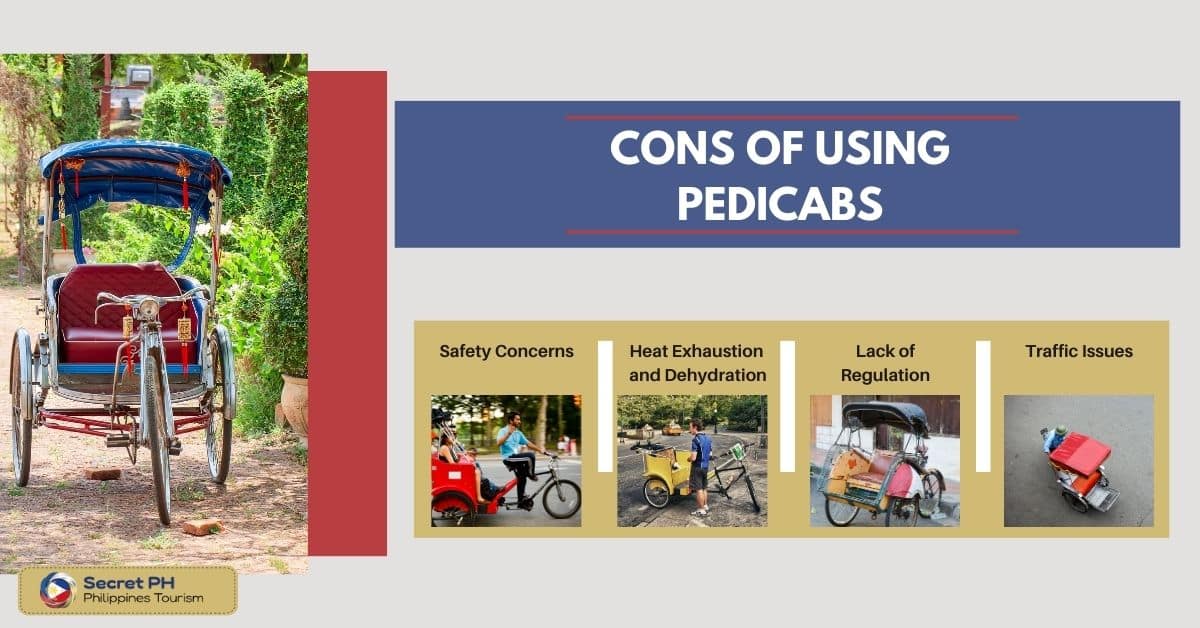
Safety Concerns
One of the biggest drawbacks of using pedicabs is their lack of safety features. Pedicabs are not equipped with safety belts or crash avoidance systems, which can make them dangerous for passengers. Additionally, drivers may not be trained or certified to operate pedicabs safely, increasing the chances of an accident occurring.
Heat Exhaustion and Dehydration
Due to their open-air design, pedicabs can get extremely hot during the summer months. Which can lead to heat exhaustion and dehydration among passengers and drivers alike. This is particularly true in areas with high humidity where it can be especially oppressive inside the cab.
Lack of Regulation
The use of pedicabs is largely unregulated in the Philippines, meaning there is no legal framework to ensure safety and quality standards are met. This can lead to drivers operating without proper licenses or insurance, as well as putting passengers at risk of being overcharged or subjected to unsafe practices.
Traffic Issues
Pedicabs can cause traffic problems as they are small and difficult to maneuver. They also take up space on busy roads, which can lead to congestion and delays. Furthermore, pedicab drivers often drive recklessly, putting other vehicles and pedestrians at risk.
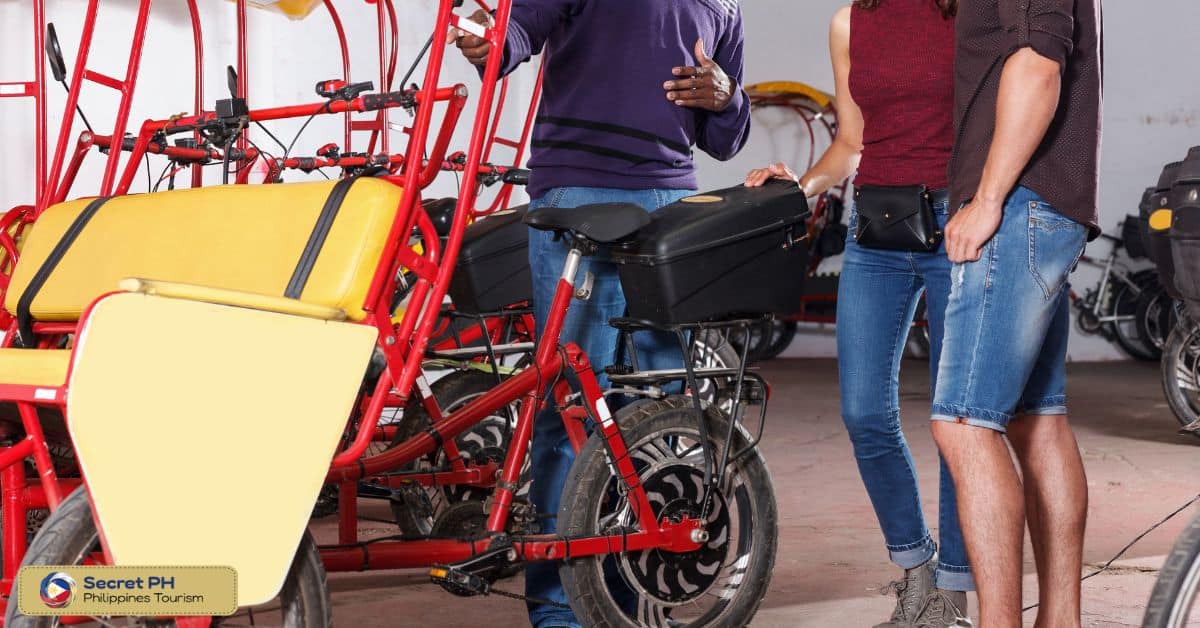
Benefits to the Environment with Pedicab Use
Pedicabs, also known as tricycles, are a popular form of transportation in the Philippines. They offer an economical and convenient option for people to get around cities and rural areas alike. While pedicabs can provide important benefits to the Philippine economy and environment, it is important to consider their impact on the environment when considering their use.
Reduced Emissions: Pedicabs produce fewer emissions than motorized vehicles, thus reducing the amount of smog in the air and improving visibility on roads and in cities.
Reduced Fuel Consumption: Since pedicabs are smaller and lighter than cars, they require less fuel for operation. This creates a more efficient and cost-effective mode of transport, which has a positive impact on the environment.
Reduced Noise Pollution: Pedicabs are much quieter than motorized vehicles, resulting in less noise pollution and disturbances to local communities.
Increased Mobility: Pedicabs can navigate narrow roads that are inaccessible to larger vehicles, providing increased mobility and access to people who may not be able to use public transportation.
Sustainable Transport: Pedicabs are powered by either a motor or bicycle, making them a more sustainable form of transportation than cars. By using renewable energy sources, pedicabs can help reduce the amount of carbon dioxide emitted into the atmosphere.
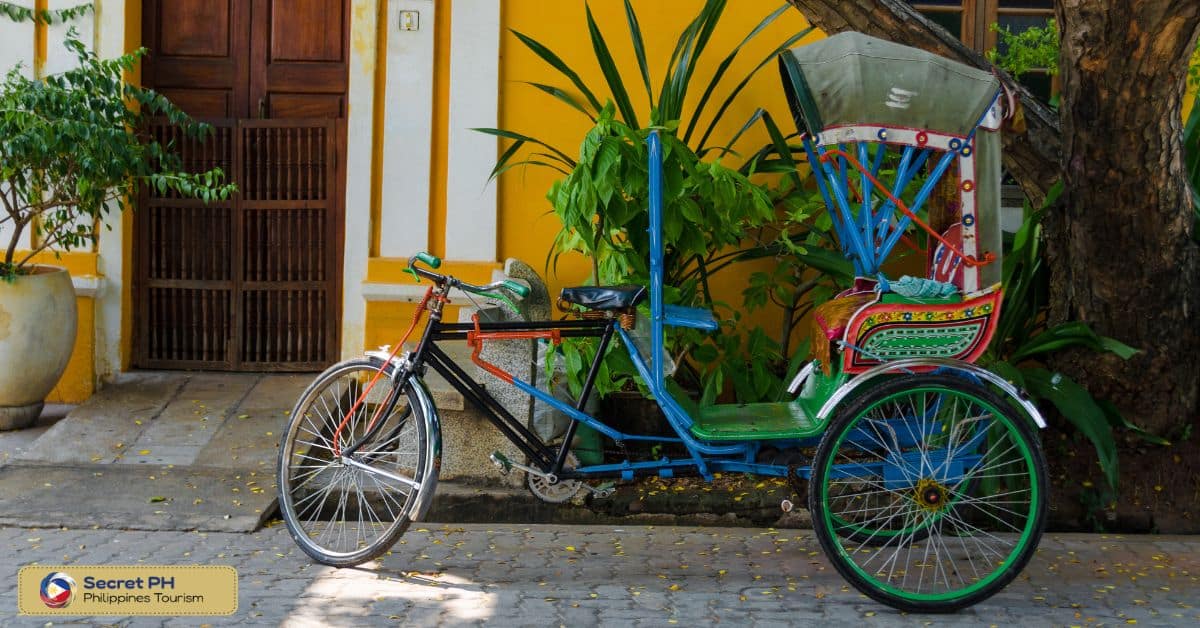
Impact of Pedicab Use in the Philippines
In the Philippines, pedicab use has had a major impact on both the economy and the environment. It is estimated that there are over 500,000 pedicabs operating in the country, with many more being built each year. This not only increases the number of jobs available for drivers but also provides an affordable transportation option for those who cannot afford to own a car or use public transportation.
The environmental impact of pedicab use is also significant, as they produce fewer emissions than motorized vehicles. This helps reduce air pollution and smog in cities, resulting in better visibility for pedestrians and drivers alike.
Additionally, the use of renewable energy sources such as bicycles has made them even more eco-friendly, helping to reduce the amount of carbon dioxide released into the atmosphere. Overall, pedicabs offer an economical and sustainable way for people to get around in the Philippines.

Economic Impact of Pedicab Use in the Philippines
Pedicab uses retains a positive economic impact on the Philippine economy. As mentioned above, pedicabs provide an affordable means of transportation for people who cannot afford to own or maintain their vehicles.
This helps reduce poverty levels as it allows more families to access essential services such as health care and education. Furthermore, it is estimated that pedicabs contribute to around 8% of the country’s GDP, providing a much-needed boost to the economy.
Additionally, the use of pedicabs creates employment opportunities for drivers. According to one study, there are over 500,000 registered pedicab drivers in the Philippines, many of whom make a decent living by providing transportation services to passengers. This not only benefits drivers but also adds to the overall wealth of the country as it creates more jobs and opportunities for people to make a living.
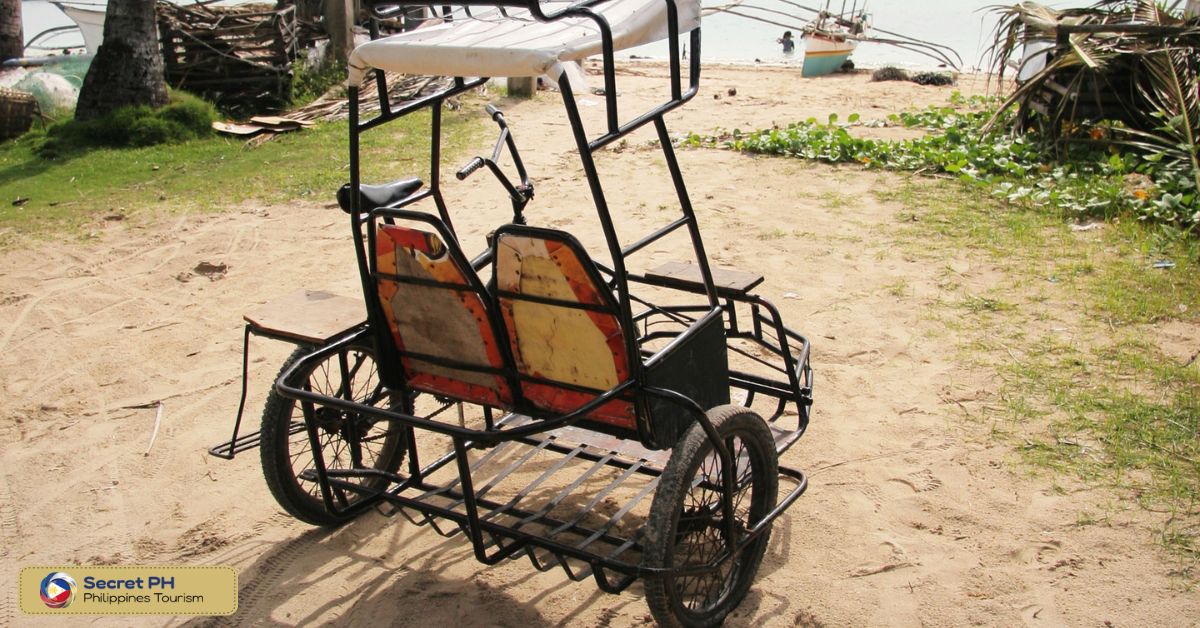
Government Regulations and Policies on Pedicabs
Pedicabs are a popular form of transportation in the Philippines, offering an economical and convenient mode of transport for people to get around cities and rural areas alike. However, there have been concerns regarding their safety standards as well as the impact they can have on traffic. As such, it is important that government regulations and policies are in place to ensure safe and sustainable pedicab use in the Philippines.
Safety Regulations
One of the main concerns with pedicabs is safety, as many drivers are inexperienced or lack proper licenses. To address this issue, the government has implemented several regulations regarding pedicab safety. These include driver licensing requirements, vehicle inspection standards, and insurance policies. Additionally, the government has also mandated that all pedicabs must be equipped with safety features such as seatbelts and headlamps.
Traffic Regulations
Pedicabs can cause traffic problems due to their small size and difficulty maneuvering on busy roads. To address this issue, the government has implemented several regulations governing pedicab use. These include speed limits, designated routes for drivers, and parking regulations. Additionally, drivers are required to adhere to traffic laws such as obeying traffic signals and yielding to pedestrians.
Environmental Regulations
The government has also implemented several environmental regulations regarding pedicab use in order to reduce air pollution and conserve energy. These include fuel efficiency standards, emissions regulations, and noise control policies. Additionally, the government has also encouraged the use of renewable energy sources such as bicycles to power pedicabs in order to reduce their environmental impact.
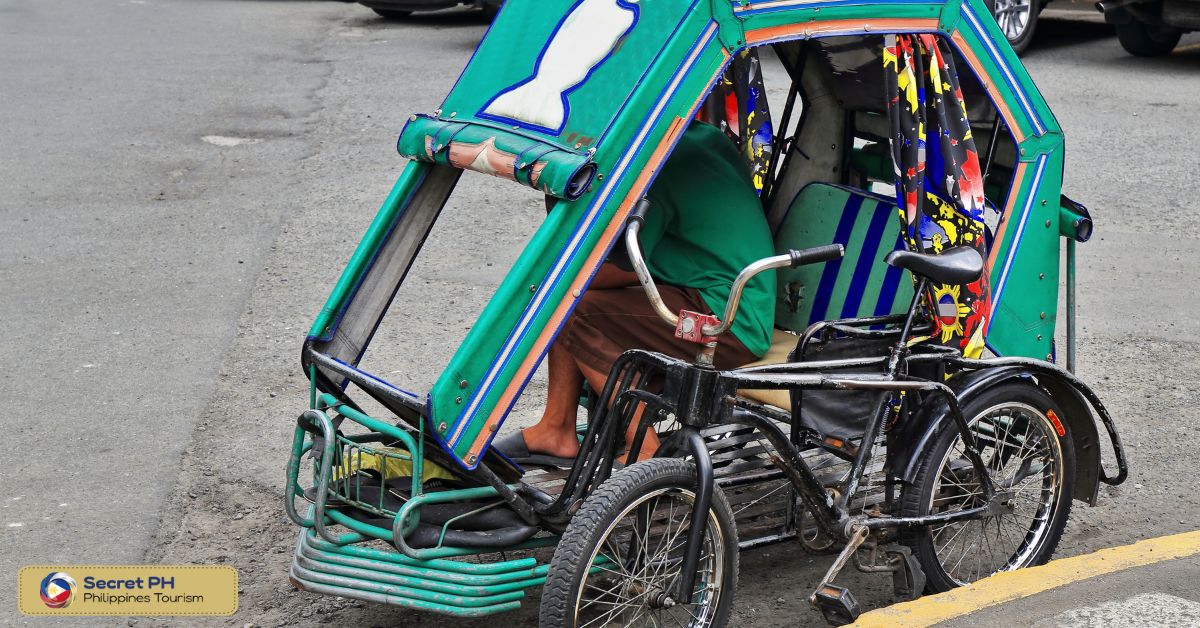
In conclusion
Pedicabs offer an economical and sustainable way to get around in the Philippines. While they provide numerous benefits to both passengers and the economy, it is important to consider their impact on the environment as well as safety concerns.
To ensure a safe and sustainable future for pedicab use in the Philippines, it is essential that government regulations and policies are in place to ensure that they are used responsibly. With the right regulatory framework and safety measures in place, pedicabs can provide an important role in Philippine transportation for many years to come.

